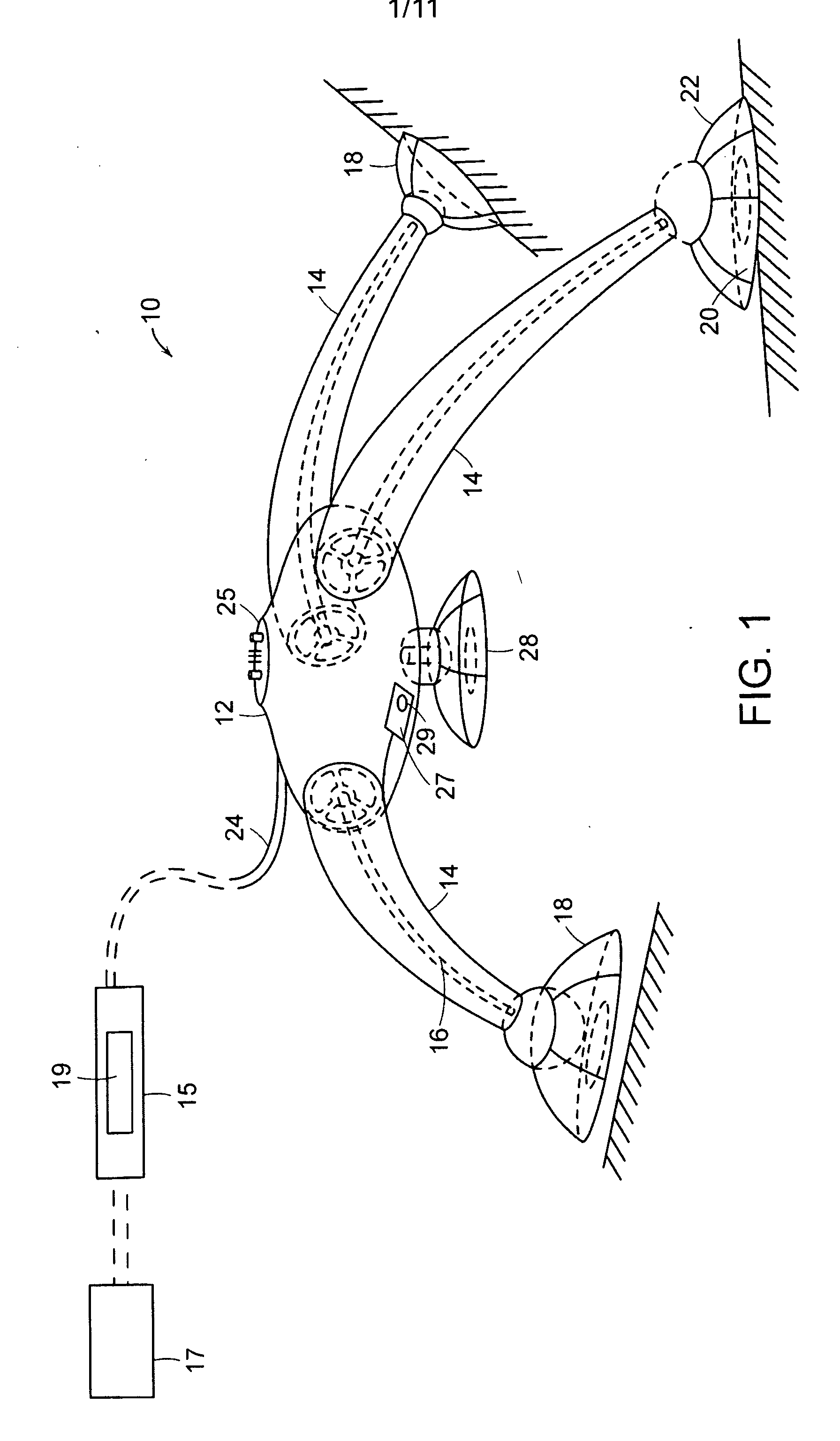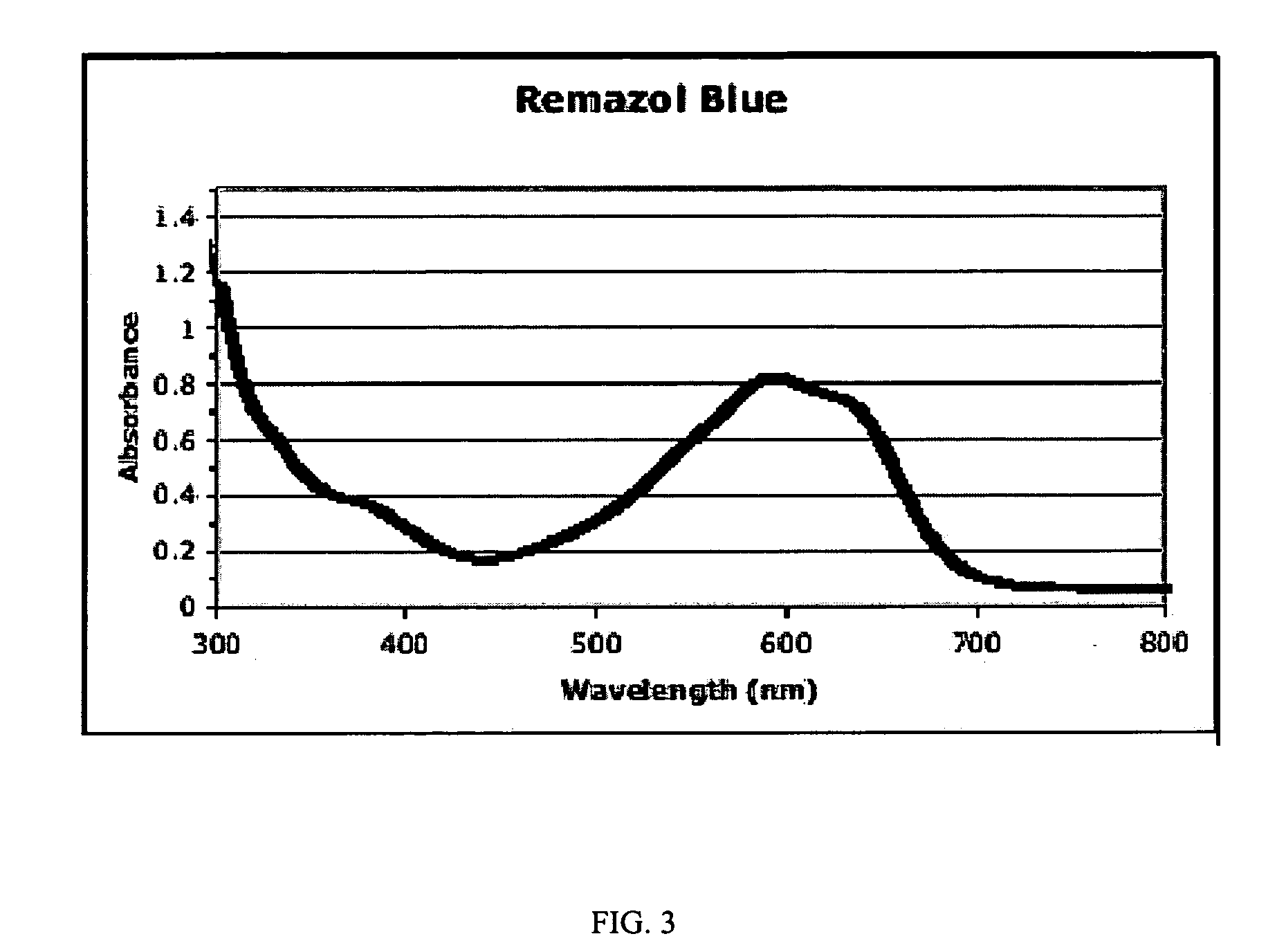Substrates, sensors, and methods for assessing conditions in females
- Summary
- Abstract
- Description
- Claims
- Application Information
AI Technical Summary
Benefits of technology
Problems solved by technology
Method used
Image
Examples
example 1
Library Construction
[0198] A library of peptides was constructed, each member of the library comprising a random amino acid sequence, an epitope (affinity) tag, and a reactive side group(s) (e.g., one or more primary amines or cysteine groups) for chemical conjugation to a reporter enzyme or dye. Examples of suitable epitope tags include polyhistidine (His) and dihydrofolate reductase (DHFR, FolA). DHFR is coded for by the folA gene.
[0199]FIG. 8 illustrates construction of three peptide libraries using epitope tags (polyhistidine and FolA), dyes (horseradish peroxidase (HRP), green fluorescent protein (GFP), and lissamine rhodamine sulfonyl chloride (LRSC)), and sequences of 10 random amino acids (i.e., “wobble sequences”).
[0200] In some cases, a reporter enzyme can be cloned into the construct to circumvent having to attach chemically a reporter enzyme to the peptide. An enzyme used in this particular screen for BV targets was green fluorescent protein attached to a random pepti...
example 2
Preparation of Cell Extracts
[0205] Following induction with IPTG, the cells were centrifuged into a pellet and then incubated with 0.2 mg / ml lysozyme (100 mM sodium borate pH 8.0, 500 mM NaCl) for 30 min at room temperature. The cells were frozen in liquid nitrogen and then immediately thawed at 37° C. three times to get efficient lysis of the bacteria. The thawed cells were then treated with 2 mg / ml DNAse I (10 Pipes, 150 mM NaCl, 10 mM MgCl2) to lyse the DNA at 4° C. for 60 minutes in order to make the solution less viscous.
[0206] The samples were then incubated with beads that bind the epitope tag (e.g., 10 μl of NTA-resin to bind a polyhistidine tag or 10 μl of methotrexate agarose to bind the FolA tag). The sample was then placed into a microtiter filtration plate and washed three times to remove the unbound proteins. The fluorescent signal of the third wash was measured in a fluorescent microplate reader at an excitation of 355 nm and an emission of 510 nm (for GFP). Alterna...
example 3
Labeling of Peptides with LRSC
[0208] For the FolA-random amino acid sequence peptide library, the beads can first be loaded with the unlabeled peptides, and after the third wash the peptides can be labeled with lissamine rhodamine sulfonyl chloride (LRSC) for 1 hour at room temperature in conjugation buffer (100 mM carbonate buffer, pH 9). The beads can be rinsed three more times to remove the unbound LRSC and then processed with microorganism extracts as described below.
PUM
| Property | Measurement | Unit |
|---|---|---|
| Pressure | aaaaa | aaaaa |
| Pressure | aaaaa | aaaaa |
| Pressure | aaaaa | aaaaa |
Abstract
Description
Claims
Application Information
 Login to View More
Login to View More - R&D
- Intellectual Property
- Life Sciences
- Materials
- Tech Scout
- Unparalleled Data Quality
- Higher Quality Content
- 60% Fewer Hallucinations
Browse by: Latest US Patents, China's latest patents, Technical Efficacy Thesaurus, Application Domain, Technology Topic, Popular Technical Reports.
© 2025 PatSnap. All rights reserved.Legal|Privacy policy|Modern Slavery Act Transparency Statement|Sitemap|About US| Contact US: help@patsnap.com



